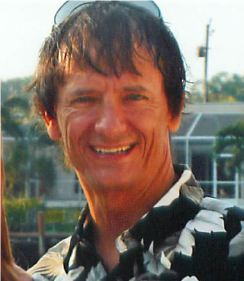Chairman
Roy C. Blake III, D.D.S., M.S.D

Dr. Roy C. Blake III received his D.D.S. degree in 1981 and his M.S.D. degree in 1984 from Indiana School of Dentistry, majoring in Maxillofacial Prosthetics and minoring in Dental Materials. Focusing exclusively on Prosthetic dentistry, Dr. Blake has maintained a private practice in West Palm Beach and Jupiter, Florida for over 24 years. He has also served as an Associate Clinical Instructor at Indiana School of Dentistry, Chairman of Removable Prosthodontics and Perio-Prosthetics at the Atlantic Coast Dental Research Clinic (ACDRC), and President of both the ACDRC and the Central Palm Beach County Dental Association.
Co-Chairman: Ron Seecharan, D.M.D.
Co-Chairman, Surgery: Kim Gandhi, D.D.S.
Course Description
This course, titled “Implants: The Surgical and Prosthetic Management of the Endosseous Root Form Patient,” is designed to teach general dentists the placement and restoration of implants. The course emphasizes prosthetically driven implants, focusing solely on the placement and restoration of endosseous root form implants, without involving complex procedures such as sinus lifts, nerve repositioning, or sub-periosteal implants.
The philosophy of the course is comprehensive treatment planning, guiding patients from the initial exam to completion. It covers diagnosis, stent fabrication, implant placement, and the restoration of various types of implants. The course features lectures, clinical slides, classroom discussions, and hands-on model work to facilitate the understanding of implant components and successful treatment planning.
Practical aspects of dentistry are also covered, including fixed and removable prosthetics, connecting teeth and implants, diagnosing problems, and solving them.
Specific Areas to Be Covered
- Abutment Selection
- Specific criteria for abutment selection
- Soft tissue depth, implant angulation, and force vectors affecting abutment selection
- Prosthetic component differences among specific implant brands
- Soft Tissue Models
- The importance of a soft tissue model
- Instructing the lab to fabricate a soft tissue model
- Stents
- Determining whether a stent is necessary
- Selecting the best stent for different types of implant-supported restorations
- Occlusion
- Determining optimal occlusion for an implant-supported crown
- The occlusal scheme’s influence on bone maintenance/loss
- Important Implant Questions
- Should teeth and implants be splinted?
- When should copings and interlocks be used?
- How many implants are necessary to successfully restore an arch?
- How long can an implant cantilever extend?
- When should cement be used versus screws for crowns?
- When should a three-unit bridge be used versus one single implant?
- When to select specific types of implant restorations:
- Implant-supported crowns
- Overdentures
- Hybrids (Fixed/Detachable)
- Latched Attachments (Milled and Non-Milled)

